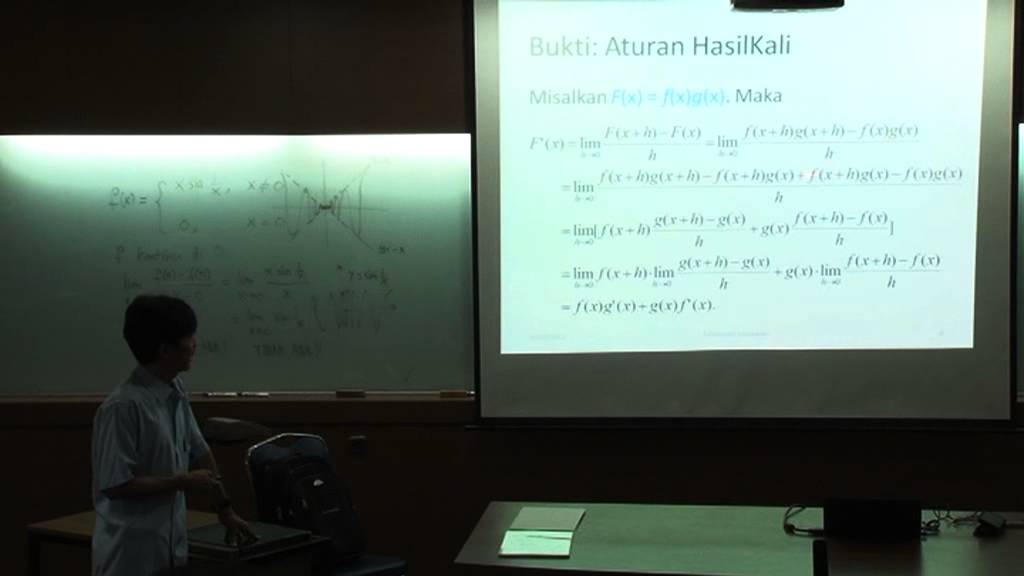Übersicht f f´ f´´, Zusammenhänge der Funktionen/Graphen, Ableitungsgraphen | Mathe by Daniel Jung
Summary
TLDRThis video script delves into function analysis, particularly focusing on polynomial functions and their behavior through derivatives. It explains how the first derivative (F') reveals critical points like local maxima and minima, while the second derivative (F'') helps determine the nature of these points. The video also highlights the concept of inflection points and the importance of understanding derivatives to intuitively sketch function graphs. By emphasizing conceptual understanding over memorization, viewers are encouraged to grasp the core ideas of slope, curvature, and function behavior, which ultimately aids in curve sketching and problem-solving in calculus.
Takeaways
- 😀 Understanding is better than memorization: It's emphasized that grasping the underlying concepts is more beneficial than simply learning by rote.
- 😀 Key focus on function analysis: The video discusses the process of analyzing various types of functions, including exponential and rational functions, especially polynomial functions.
- 😀 Importance of derivatives: The first derivative (F') represents the slope of a function, while the second derivative (F'') indicates the curvature and helps identify critical points.
- 😀 Critical points determination: To find local maxima or minima, you set the first derivative equal to zero and solve for x (e.g., x=2, x=4). These points represent potential extreme values.
- 😀 Steepness and sign of derivatives: Positive slope (steep incline) is indicated by a positive first derivative, and negative slope (steep decline) by a negative first derivative.
- 😀 Tangent slopes at critical points: The slope of the tangent line at a maximum or minimum is zero, meaning the first derivative is zero at those points.
- 😀 Identifying inflection points: The second derivative plays a key role in locating inflection points, where the function changes concavity.
- 😀 Sign analysis for extrema: By analyzing the sign of the second derivative, one can determine whether a critical point is a minimum (positive value) or maximum (negative value).
- 😀 Graphing with derivatives: Understanding how to graph a function using its first and second derivatives, by marking the behavior of the function based on the slopes (positive/negative) and curvature.
- 😀 Simplified approach: The video encourages students to focus on understanding the relationships between the first and second derivatives for more straightforward function analysis, rather than memorizing complex rules.
Q & A
What is the main focus of this lesson?
-The lesson focuses on the analysis of rational functions, particularly polynomial functions, and how to examine their behavior using derivatives.
Why is understanding the concept of derivatives important in analyzing functions?
-Understanding derivatives is crucial because they provide information about the function's rate of change, allowing you to identify key points like extrema (maximum and minimum) and inflection points.
What role does the first derivative play in function analysis?
-The first derivative represents the slope of the function. By setting it equal to zero, you can find potential points where the function has extrema (maximum or minimum).
How can you determine whether a point is a maximum or a minimum?
-To determine if a point is a maximum or minimum, you use the second derivative. If the second derivative is positive at a point, it’s a minimum, and if it’s negative, it’s a maximum.
What is the significance of the second derivative in this analysis?
-The second derivative helps in determining the concavity of the function. It also helps confirm whether a critical point from the first derivative is a maximum or a minimum.
What is an inflection point, and how is it related to the second derivative?
-An inflection point occurs where the function changes its concavity. It happens where the second derivative is equal to zero, indicating a transition in the function’s curvature.
How do you find the potential extrema (maxima and minima) of a function?
-To find potential extrema, set the first derivative equal to zero. The resulting x-values are where the function may have maxima or minima. Then, use the second derivative to classify these points.
What does it mean when the first derivative is zero at a point?
-When the first derivative is zero at a point, it means that the slope of the tangent line at that point is horizontal, which indicates a potential extremum (maximum, minimum, or saddle point).
How do you interpret the sign of the first derivative in the function’s graph?
-A positive first derivative means the function is increasing, while a negative first derivative means the function is decreasing. This is useful in determining the behavior of the graph around critical points.
Why is it emphasized that understanding is better than memorizing formulas in function analysis?
-Understanding the concepts behind the functions and their derivatives allows you to apply the techniques intuitively, making it easier to solve problems without having to memorize every step or formula.
Outlines

Esta sección está disponible solo para usuarios con suscripción. Por favor, mejora tu plan para acceder a esta parte.
Mejorar ahoraMindmap

Esta sección está disponible solo para usuarios con suscripción. Por favor, mejora tu plan para acceder a esta parte.
Mejorar ahoraKeywords

Esta sección está disponible solo para usuarios con suscripción. Por favor, mejora tu plan para acceder a esta parte.
Mejorar ahoraHighlights

Esta sección está disponible solo para usuarios con suscripción. Por favor, mejora tu plan para acceder a esta parte.
Mejorar ahoraTranscripts

Esta sección está disponible solo para usuarios con suscripción. Por favor, mejora tu plan para acceder a esta parte.
Mejorar ahoraVer Más Videos Relacionados
5.0 / 5 (0 votes)






